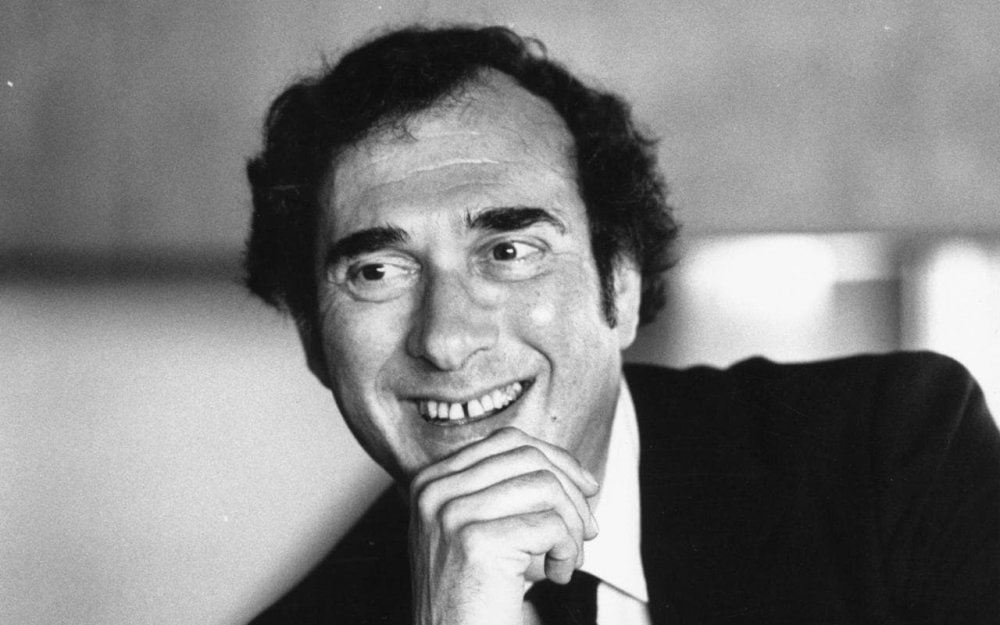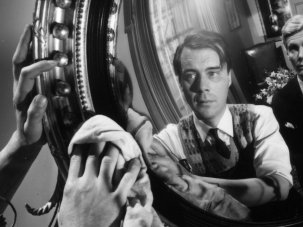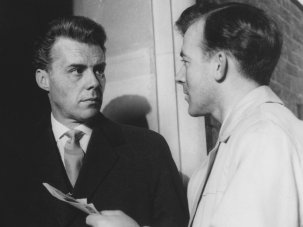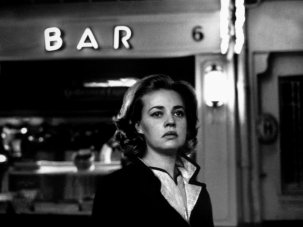The working partnership between American director Joseph Losey and British writer Harold Pinter produced the finest work on screen that either ever did. In their three films together – The Servant (1963), Accident (1967) and The Go-Between (1971) – they explored the British class system with forensic skill, always pitting their modernist disdain for its moral bankruptcy against their own deep-seated, almost helpless fascination. We can add to those finished films their 1972 collaboration on the unmade version of Proust’s In Search of Lost Time, which Pinter described as “the best working year of my life”.
Pinter on Screen: Power, Sex and Politics runs 1-31 July 2018 at BFI Southbank, London.
This piece was originally published in the San Sebastian International Film Festival catalogue on the occasion of a 2017 Joseph Losey retrospective.
That they were a great creative team has something to do with their different upbringings and their contrasting talents. Liable to exaggeration of his social background, Losey had been raised in La Crosse, Wisconsin USA by a snobbish mother and a father whose expectation of inherited wealth had been wiped out when his seemingly well-to-do father died, leaving, by their standards, precious little money. By contrast, Pinter had grown up in London’s East End among a loving working-class Jewish family, but the experience of being evacuated from London to Cornwall at the beginning of World War II, and then returning just in time for the worst part of the Blitz, left him feeling a loss of identity and a strong sense of how precarious life can be.
What the two had in common, despite Losey being 20 years older than Pinter, were their roots in the theatre and their outsider viewpoint, but there were complementary differences too. Losey was a physically imposing presence, yet his emotions often overwhelmed him. Pinter was more self-contained and concerned with accuracy of expression, even though he believed that no statement could be definitive. Pinter was a tester of emotional truths, a writer at the top of his game when working with Losey, and an actor who knew what actors could do with clear lines written with precise rhythm, cadence and diction.
Another actor brought the two together. In the early 1960s, Dirk Bogarde had grown weary of the handsome matinee idol image Rank Studios had built for him in hits like Doctor in the House (1954) and other successes such as Ill Met By Moonlight (1957) and A Tale of Two Cities (1958). One of these, The Sleeping Tiger (1954) was the first film Losey directed in the UK after his blacklisting in the US by the House of Un-American Activities. The director and the star must have got on well because Bogarde helped to get Losey a three-picture deal at Rank (although this was later aborted). It was while making The Sleeping Tiger that Losey first showed Robin Maugham’s novella The Servant to Bogarde. Its tale of the gradual takeover of an upper-class London bachelor’s household by his obsequious new manservant was exactly the kind of thing Bogarde was looking for.
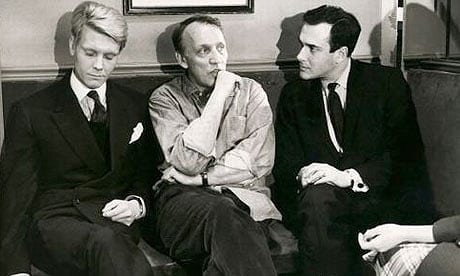
James Fox, Joseph Losey and Harold Pinter on the set of The Servant (1963)
By 1961, however, director Michael Anderson had got the book rights and commissioned a screenplay from Pinter, then in the first flush of fame as a playwright. Pinter stripped the novella of its first-person narrator, its snobbery and its arguably anti-Semitic characterisation of Barrett, the titular Servant, and used an economical language that implied rather than stated the slippage of power relations away from the ‘master’ Tony (to be played by ingénue James Fox) towards Barrett. Pinter’s script impressed Bogarde, so he rang Losey, who was shooting Eve at the time. The role of Barrett would help Bogarde take another step away from being a pin-up after his groundbreaking portrayal of the blackmailed lawyer in Victim.
Though well-lubricated with drink, the first meeting between the director and writer did not go well. According to Losey, Pinter said, “I’m not accustomed to writing from notes and I don’t like this.” Pinter’s version was different: “I went to see [Losey] at his house in Chelsea. ‘I like the script,’ he said. ‘Thanks,’ I said. ‘But there are a number of things I don’t like,’ he said. ‘What things?’ I asked. He told me. ‘Well why don’t you make another movie?’ I said, and left the house.” Two days later things were smoothed over and, as Pinter said, “over the next 25 years we worked on three more screenplays and never had another cross word”.
In Pinter’s script for The Servant, Barrett undermines the allure of Tony’s uptight girlfriend Susan (Wendy Craig) by bringing in seductive housemaid Vera (Sarah Miles), and by making his indolent master increasingly dependent on booze and drugs. Pinter’s claustrophobic scenario enabled Losey to apply all the art-cinema approaches he had co-opted from the European masters to the very English interior of a London terrace house. They made it a very sinister space, a kind of Sadeian prison theatre in which the class system is picked apart in clashes of manners and morals.
Pinter’s scrupulousness saved Losey from the excess of Eve, the director’s baroque portrait of a femme fatale (Jean Moreau) psychologically torturing her writer-lover (Stanley Baker). However, Losey himself was unsure. “It took me many, many years to get over the feeling that The Servant was inferior to Eve,” he told Michel Ciment. “It cost a lot less, of course; it was less elaborated, less personal, and in many ways it’s a kind of remake.”
In my view Losey was mistaken. As in Eve, degradation and sexual revenge are the whole matter, but in The Servant they’re more insidiously played out. The fusion of Pinter’s stark approach to image and language with Losey’s sensitivity to spaces and objects – seen through cinematographer Douglas Slocombe’s deep-etched monochrome photography – brings to this low-budget grand vision an authentic creepy power that’s missing from Eve. The Servant was so distinctive that it initiated a new formally ambitious kind of cinema in the UK, one that reached beyond the social realism of Losey’s British contemporaries.
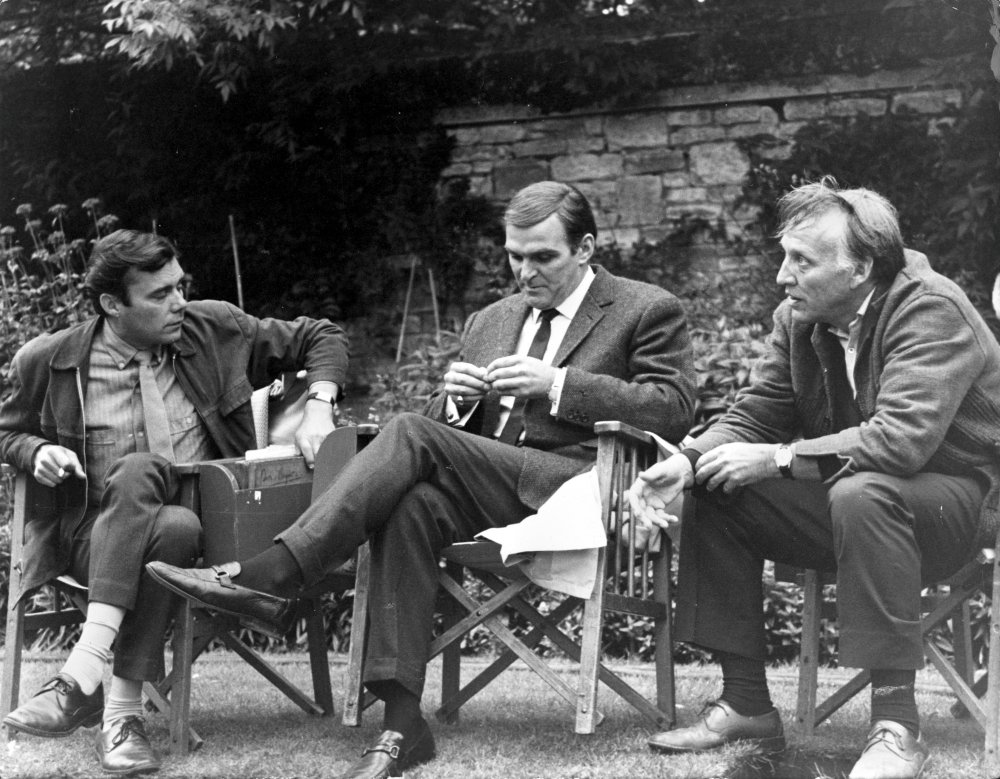
Dirk Bogarde, Stanley Baker and Joseph Losey on location for Accident (1967)
By the time Losey came to make Accident, four years later, the 56-year-old director considered himself semi-British. He had been living in the UK for 14 years and his son, Joshua, had been brought up and educated there. Accident brought together the same three talents – Losey, Pinter, Bogarde – to work on an adaptation of Nicholas Mosley’s novel about two Oxford dons doting on a beautiful woman student who happens to be an Austrian princess. US producer Sam Spiegel had acquired the rights for Losey and Pinter, but almost immediately Spiegel began to interfere in the script, trying to inveigle Pinter to write it on his yacht, and challenging the casting of Bogarde in the lead. Losey claimed that, after one Spiegel meeting, Pinter vomited in the street – Pinter always denied this. In the end they were forced to buy the rights from Spiegel at a high price.
For me Accident is Losey’s most resonant film. Its barbed wit and formal complexity distinguish it from the many other British film and television dramas dealing with class and sex among the English county set. Its one dull note, though, is Jacqueline Sassard, a French starlet ‘discovered’ at 15 years old who seems to have been cast as aristocratic Anna because of her large eyes and her erotic lassitude. To Losey she was “never more than an instrument”, and her somnolent performance – she says little because her English wasn’t good enough – is below the film’s very high standard, set not least by Pinter’s then wife Vivien Merchant, note-perfect as Stephen’s wife, the all-seeing Rosalind.
Stephen (Bogarde) is Anna’s effete tutor, William (Michael York) a well-born fellow student who is also pursuing her, and Charley (Stanley Baker) Stephen’s athletic friend and rival. The novel begins with a sports-car accident close to Stephen’s house. Stephen hears it and investigates, finding that it’s William’s white car that’s lying on its side. William is dead but Anna has survived. “You’re standing on his face,” one of Pinter’s most gripping early lines, is said by Bogarde as Anna tries to get out of the car.
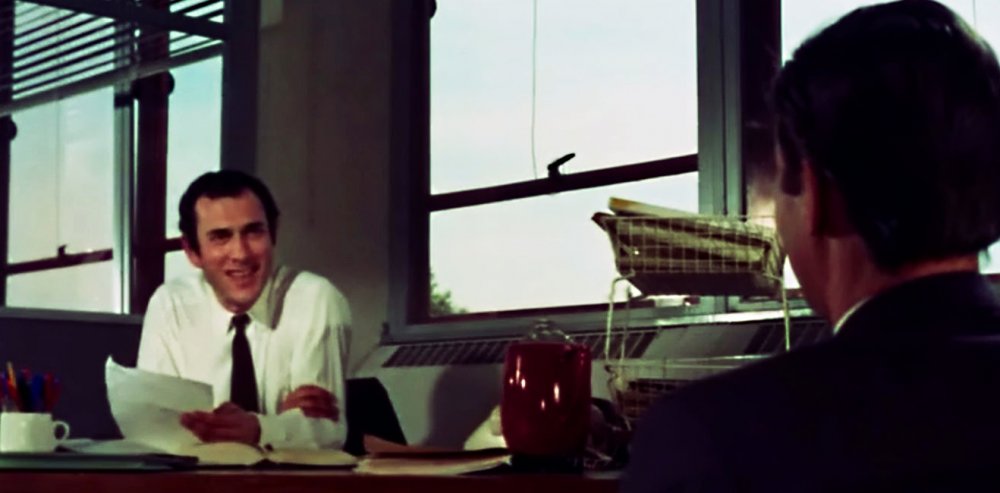
Pinter makes a cameo in Accident as a BBC executive, alongside Freddie Jones
The rest of the novel is made up of flashbacks to the events leading up to the crash. According to Losey, Bogarde and Baker “disliked each other very much”. Bogarde relished the time and space Losey always gave him but he was fed up with the director’s “passion for bullying actors”. Baker shows unusual subtlety in the film. His Charley is quite straightforwardly lustful compared to Stephen but there’s also a poignant lostness to him. Both actors, in their contrasting ways, show their mastery of how to make Pinter’s lines seem naturalistic while striking sparks off one another.
Pinter, as usual, made radical changes to the storyline. Again he got rid of the first-person narration from Stephen, thereby making him – as Bogarde’s nuanced performance illuminates – more of an insecure ‘nearly’ man, who can only realise his sexual longings by exploiting the accident, taking advantage of the traumatised Anna while his wife is in hospital giving birth.
It was this ‘semi-rape’ ending that was Pinter’s most radical change from the book. Mosley thought it a “false note”. Bogarde says that Losey “wanted that cruelty”. But those who see nothing but blatant sexism here may be missing the point. According to critic Penelope Gilliatt, the women in Accident are “the most powerful combatants of all”. The privileged Anna will be protected her whole life by her “pristine lack of imagination and a drowsy greed”.
William creates the circumstances for Stephen’s hidden passion to flower when he invites Stephen to join him and Anna punting on the river. Anna has such an impact on Stephen that he invites the couple to Sunday lunch. Charley also arrives, as if by accident (having learned about it from Anna). Stephen thus finds himself complicit both in the Charley/Anna sexual affair and William’s plans to marry her. As Losey said, “This is a sort of Sunday afternoon brothel where nobody is pretending to play tennis – they’re playing sex.”
So deft is the use of time and memory in Pinter’s script that Losey avoided the alienating angles of Eve and The Servant. Allusion and stylish indirection dominate – take, for instance, Stephen’s adulterous interlude in London with an old girlfriend, played by Delphine Seyrig: images of their unheard conversations play against an exaggerated formal dialogue in voiceover.
Exemplary of Losey and Pinter at their best, Accident takes its time exploring a complex milieu. Occasionally it displays a caressing attitude to the privileges it imagines accrue to randy Oxford dons, but it is otherwise restrained in its use of objets d’art and astringent about the world it describes. Certainly for Losey it indicated the way forward, describing its structure as “the kind of thing that I hope to do and will do maybe in Proust”.
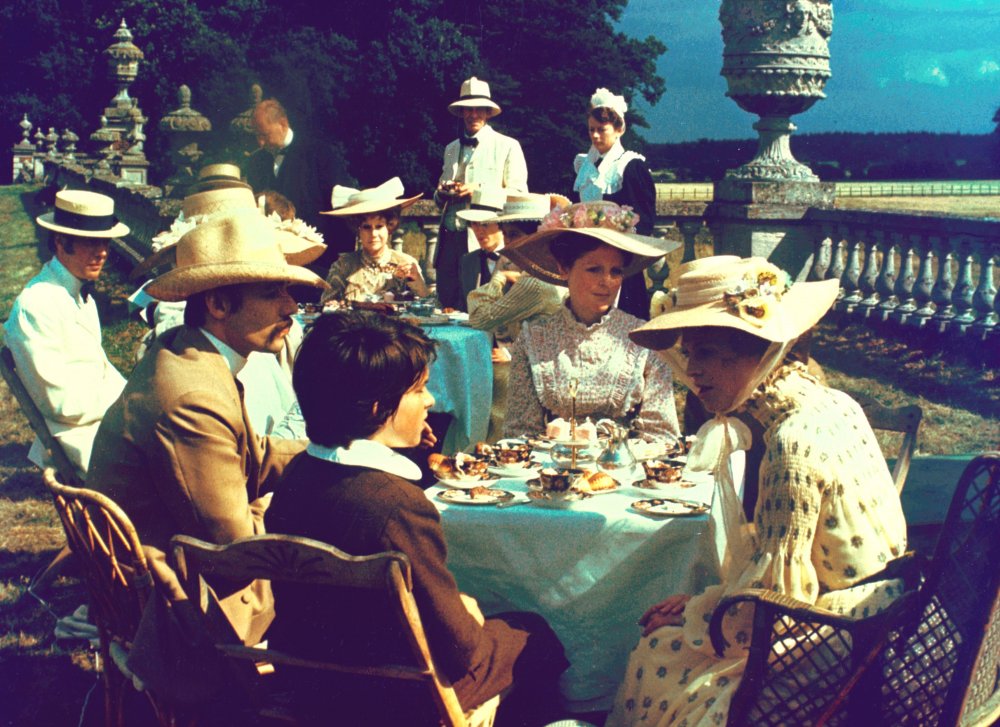
The Go-between (1971)
But before Proust, there was The Go-Between. This film also leans towards a Proustian variety of remembrance, taking us back to the hot summer of 1900 when novelist L.P. Hartley’s autobiographical schoolboy Leo goes to stay with a friend in Brandham Hall in Norfolk and becomes besotted with his host’s teenage sister Marian. She in turn exploits Leo as a messenger between her and her lover Ted (Alan Bates), a local farmer.
The novel was largely written in Venice and its subject is the nature of nostalgia. This particular summer marks and damages Leo unforgettably and it is also, of course, the long Edwardian summer of imperial apogee that England will never have again. A generation was growing up unaware of its eventual fate on the battlefields of the Somme. It’s a moment often revisited in cinema from the 1970s to 90s.
At first Pinter felt he couldn’t adapt it: “It’s too painful, too perfect,” he opined. But he relented, the pull of its ideas about the past influencing the present too strong. There was a long delay between Pinter’s first draft, written in 1963, and it finally getting into production in 1971.
Yet maybe Pinter’s instincts were partly right. His main innovation – an intermittent use of flash forward to a mysterious figure in a present-day limousine arriving in Norfolk – seems moot now. Julie Christie – forced on Losey by the financiers – admitted she was too old at 29 to play the teenage Marian and her behaviour consequently seems implausibly petty.
There are also signs that Pinter himself had become infected by Losey’s tendency to overreach – for the film, though admirable, feels pristine rather than poignant. It does look “hot, and like a slightly faded Renoir or Constable”, as Losey wanted, but it doesn’t move us as much as Hartley’s novel moved Pinter: he could not stop crying when he read it.
None the less The Go-Between won Losey the coveted Palme d’Or at the Cannes film festival, thereby beating his great rival Luchino Visconti, who had thought – along with his star Bogarde, who had chided Losey with a note saying “hope you don’t win” – that his Death in Venice was sure to win. The Italian director was so upset that he stormed out of the festival and had to be lured back with the creation of a Special Award.
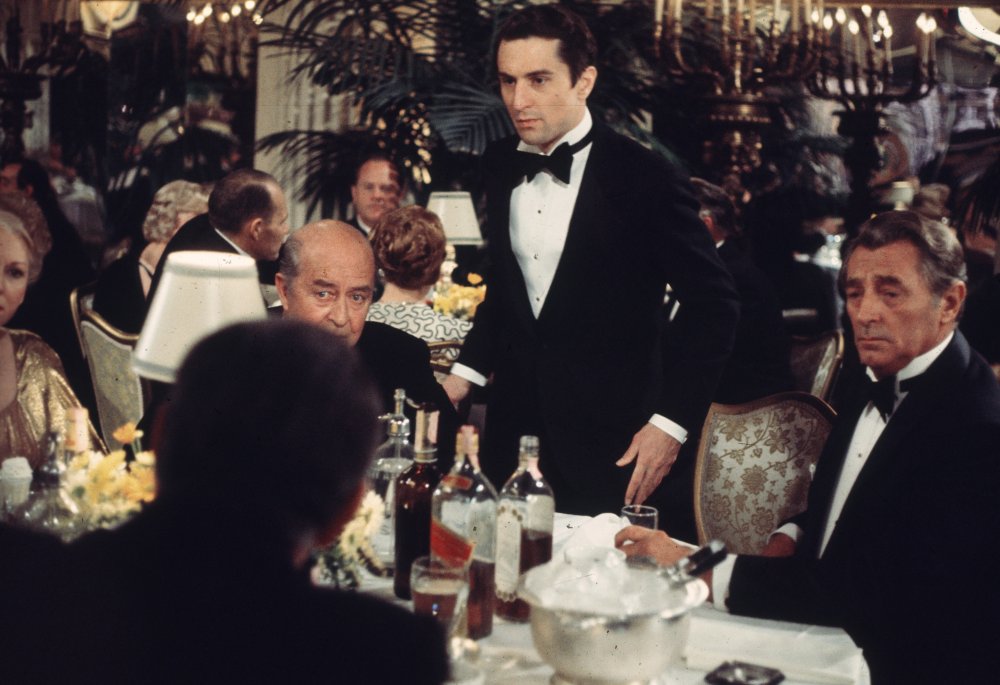
The Last Tycoon (1976)
In 1972, with three artistically successful films and a Palme d’Or under their belt, the Losey-Pinter partnership contemplated literature’s finest labyrinth, Proust’s A la recherche du temps perdu. Raymond Carr, the Oxford don who was the model for Stephen in Accident, said of Losey: “I had been told that he was ‘left wing’ and opposed to the establishment. I came to the conclusion that he was a cinematic Proust, fascinated by the upper crust, even a snob.” There is evidence too of a Proustian self-portrait in Eve, when a critic describes to Branco the genius of his unseen Tyvian-written film: “Signor Branco, I think your film is a significant advance on the problem of telling a story at different levels of time and consciousness.”
In 1970, Proust’s work had done the rounds as a film project. The rights were owned by Nicole Stéphane (who appears in Les Enfants terribles, 1949), a scion of the Rothschild family. She first went to Francois Truffaut, who might have made the first volume Un amour de Swann (Swann in Love), and eventually Visconti, who had prepped Sodom et Gomorrah and then pulled out.
Pinter spent three months early in 1972 on what he admitted was an “almost impossible” task: condensing all of the 3,000-plus-page novel into a single film. A Proustian scholar, Barbara Bray, was hired to assist.
According to Bray, the structural idea Pinter adopted – of starting with the Prince de Guermantes’ party in 1921 from the final volume and then flashing back to the 1888 childhood scenes from the first – came from Samuel Beckett. Among the many astonishingly ambitious aspects of Pinter’s screenplay is an opening sequence of 35 shots without dialogue, the first few intercut with a yellow screen that proves to be a fragment of yellow wall from Vermeer’s View of Delft. Throughout the script certain locations, Venice among them, are presented as quick identifying images that then fade.
According to Pinter’s biographer Michael Billington, Proust’s ideas about time, memory and the importance of art sounded a bell in Pinter. “It was a kind of homecoming,” he said. Pinter said “I was swallowed up by it.”
He did the usual thing of losing the first-person narration, and gone too was the famous tasting of the madeleine that opens the floodgates of memory. His script counterpoints Marcel’s creeping disillusionment with a sense of revelation. Had it been made in the early 1970s it might have been the ultimate European art movie of its time, featuring the likes of Bogarde and Alain Delon and perhaps Alan Bates, James Fox, Julie Christie, Glenda Jackson and Donald Sutherland.
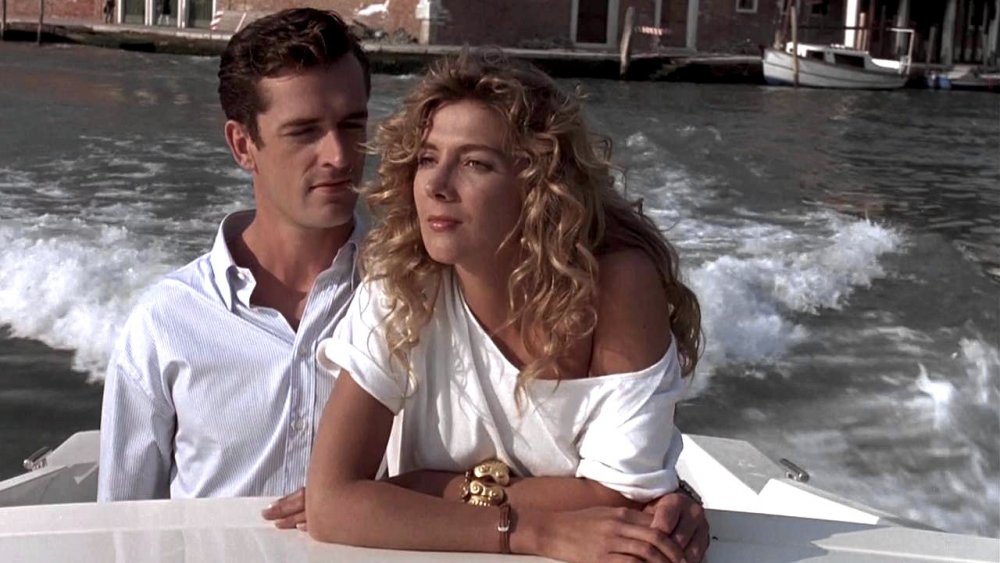
The Comfort of Strangers (1990)
What killed the Proust project was its ambition. It would have cost four times as much as Visconti wanted for his version. Nowadays 445 shots doesn’t sound like a lot for a feature, but Pinter’s screenplay clocked in at an unacceptable three hours 58 minutes of expensively gorgeous settings. A lot of money had already been squandered in pre-production.
Losey, who called it “the absolute height of [Pinter’s] achievement”, encountered all kinds of blocks. “I met your president Valéry Giscard d’Estaing,” he told Michel Ciment, “and he said to me, ‘What makes you think you can adapt Proust? You come from the Midwest, you can’t even speak French properly.’”
That the Proust screenplay didn’t get made was a marker that Losey’s best days were already behind him. He began to feel slightly embittered by the burgeoning success of Pinter, who was only just hitting his stride.
Pinter’s decision in 1975 to write the screenplay of The Last Tycoon for Sam Spiegel is indicative of the cooling between them. Pinter had conquered his disdain for the producer when Losey had not, and to make matters worse the film was directed by Elia Kazan, regarded by Losey and fellow blacklisted filmmakers as a traitor for naming names to the HUAC. The unfinished Scott Fitzgerald novel itself is exactly the kind of material Losey would have hoped to get for himself.
The same was true of John Fowles’s postmodernist novel The French Lieutenant’s Woman, which Pinter would adapt for Karel Reisz in 1979. By that point Losey was regularly suggesting Pinter for his projects but Pinter kept finding reasons to decline. Losey told him that he saw a lot of his own work in The French Lieutenant’s Woman, a sure sign that he felt betrayed.
It is an interesting parlour game to imagine what these other Pinter scripts would have been like had Losey directed them, particularly his 1990 adaptation of Ian McEwan’s novel The Comfort of Strangers, directed by Paul Schrader. With its feel for Venice’s sinister aspects, that film could have been a great coda to Eve, but it was made long after Losey’s death in 1984.
-
The Digital Edition and Archive quick link
Log in here to your digital edition and archive subscription, take a look at the packages on offer and buy a subscription.




